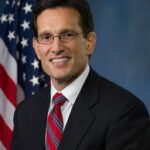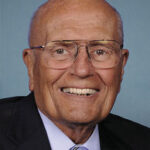U.S. House
A Year in Smart Politics
A look back at some of the reports that made headlines from Smart Politics in 2014.
Read MoreA Year in Smart Politics
A look back at some of the reports that made headlines from Smart Politics in 2014.
Read MoreJohn Dingell Served with 2,453 US Representatives
The Michigander served alongside 86 percent of all female U.S. Representatives elected to the chamber through the 113th Congress.
Read MoreSenate Will Have Historic Number of Ex-US Reps in 114th Congress
With a Cassidy victory in Louisiana, the 114th Congress will convene with more U.S. Senators who previously served in the U.S. House than in any Congress dating back to at least 1899.
Read MoreWill a Freshman US Representative Win a Senate Seat in 2016?
Tom Cotton and Steve Daines became two of just 19 House freshmen to be elected to the Senate over the last century; will a new freshman risk his or her seat to do the same in two years?
Read MoreMassachusetts Republican US House Losing Streak Tops 100
It has been 20 years since the last time Republicans won a U.S. House race in the Bay State; the GOP losing streak has now reached a nation-worst 101 in a row.
Read MoreDemocrats Claim Connecticut’s Longest Partisan US House Streak in 100+ Years
Connecticut Democratic U.S. House candidates have now won 20 elections in a row – the most by either party in the state since 1908.
Read MoreWill Alaskans “Throw All the Bums Out” for the First Time in History?
Alaskans have never voted both gubernatorial and U.S. Senate incumbents out of office in the same cycle; incumbents in all three statewide offices could lose Tuesday.
Read MoreWill Wisconsin’s Tight Gubernatorial Race Impact Its US House Contests?
A study of 55 election cycles finds evidence that Badger State congressional races are more competitive when gubernatorial elections are close.
Read MoreBlowout: More Than 1 in 6 US House Races Have Just One Major Party Nominee
Regional differences are stark: major parties were unable to recruit candidates in 27 percent of Southern contests compared to just one percent in the Midwest.
Read More








